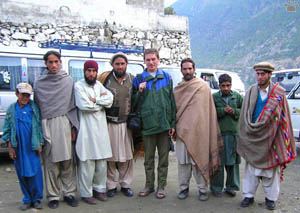
When high passes over the Hinduraj Mountains are closed, buses
to Chitral go through Afghan territory.
Pakistan - part 3
The Karakoram Highway is not the only road into the mountains.
There are many other accessible valleys, each one culturally different: people
of Ladakh speak Shina, a Tibetan language, while in Chitral they speak Pashto
and Khovari.
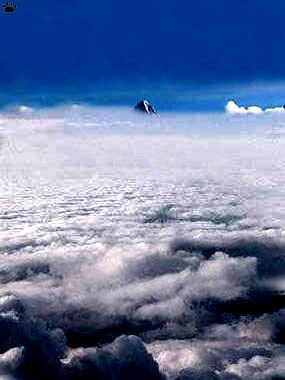
K2 (8611 m), locally known as Chogri, is the world's second
highest mountain. It is accessible from Ladakh or from
Raskemdarya valley in Xingjiang. This is a view from Gilgit area. |
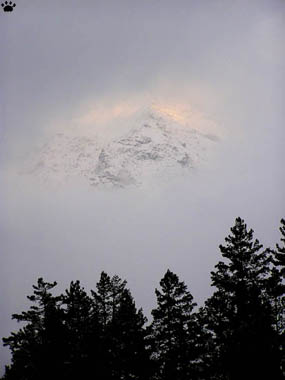
Tirichmir (7690 m) is the highest peak of the Hindukush. This
is
the only view I managed to get from Chitral. It also looks great from
Lyangar in Tajikistan, or from Vakhan Corridor in Afghanistan. |
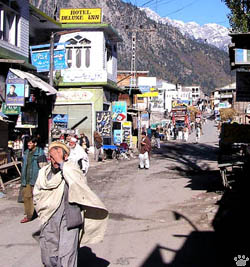
Kalam Village, Swat Valley. |
Swat River in Kohistan runs parallel to the Indus,
west from the KKH. The Kohistanis are often said to be unfriendly to visitors.
This is not true. |
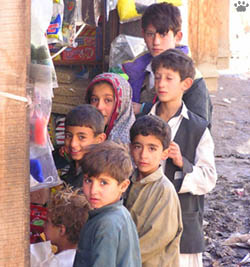
Kohistani and Pashtun kids, Kalam. |
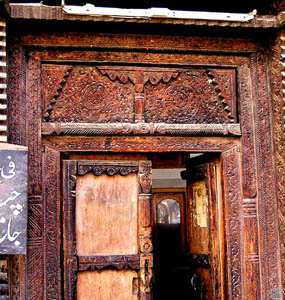 |
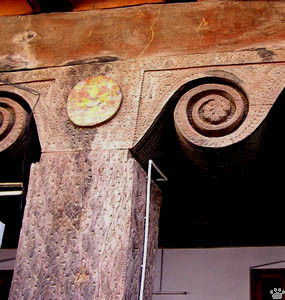 |
| 2300 years after Alexander the Great,
Greek influence is still obvious in carved ornaments of old wooden mosques. Kalam. |
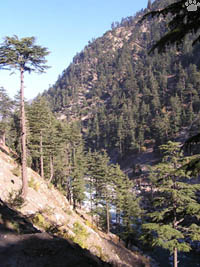
|
Upper Swat and Chitral are good places to see
forests of deodar (Cedrus deodara), the largest of true cedars.
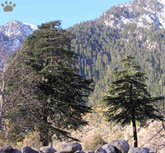
|
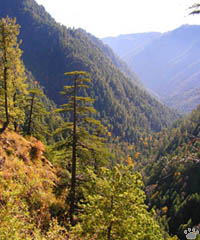 |
| Deodar forests, Kalam. |
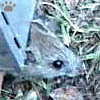
Rat Rattus tanezumi,
Kalam. |
Other species occur in the Mediterranean, from
Morocco to Turkey and Lebanon. Unfortunately, these forests are intensely logged,
especially in Swat, a very popular summer resort area, which is experiencing boom
in hotel construction. For now, remnant forests are still easily accessible, and
full of small wildlife. |
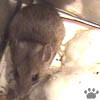
Rat Niviventer
niviventer, Kalam. |
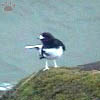 |
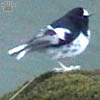 |
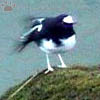 |
 |
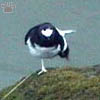 |
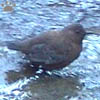 |
 |
Birds of Swat rivers:
upper row - little forktail
(Enicurus scouleri), left -
brown dipper (Cinclus
pallasi), right - white-
capped water-redstart
(Chaimarriornis
leucocephalus). Kalam. |
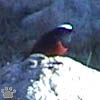 |
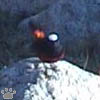 |
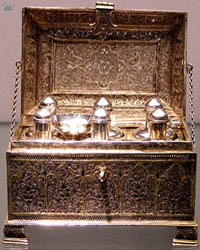
Ancient Pashtun golden spicebox,
15th century AD, The British Museum. |
Highlands of Pakistan have always been famous
for their art, especially carpets, wood carving, and metalwork.
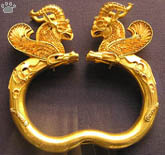
Skiff gold from the Hindukush,
3rd century BC, The British Museum. |
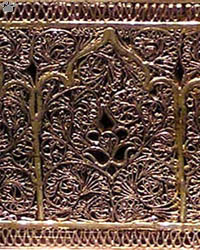
Detail of the spicebox shown on the left photo,
15th century AD, The British Museum. |
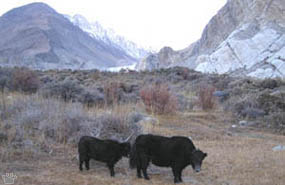
Yaks, Chitral Gol National Park. |
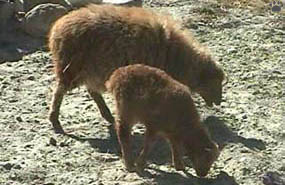
Sheep, Chitral. |
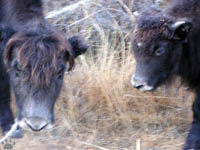
Yaks - mother and calf, Chitral Gol Nat'l Park. |
People in upper valleys don't have enough arable
land, so they depend on their livestock - goats, sheep and yaks. In spring and
fall, herds moving up or down mountain roads can be a major driving hazard. |
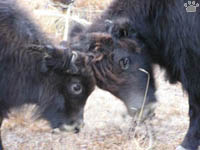
Yaks playing, Chitral Gol Nat'l Park. |
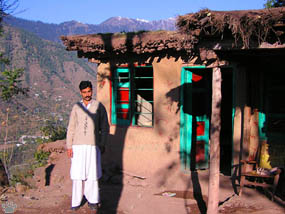 |
 |
| Despite dramatic recent history and
ongoing political problems, people of Kashmir are very good-spirited, hospitable,
and surprisingly well-educated. Machiara National Park. |
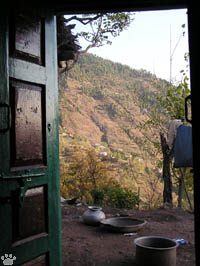
View from a house, Machiara Nat'l Park. |
The last valley to the east is the Pakistani part
of Kashmir. It is much less arid than the rest of the country, so villages climb
for thousands of meters even up the steepest slopes. The best place to see the
remaining forests is just across the Punjab border, in Ayubia National Park, where
beautiful old-growth stands of pines, firs, and hardwoods still exist. |
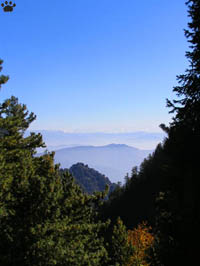
Muree Hills near Dungagali, Ayubia Nat'l Park. |
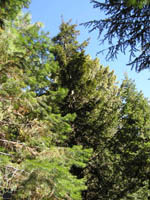 |
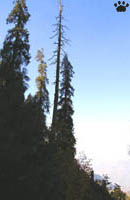 |
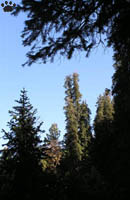 |
 |
| Trees of Ayubia National
Park, left to right: tropical yew (Taxus sumatrana), West Himalayan fir
(Abies pindrowi, 2 photos), giant horse-chestnut (Aesculus indica). |
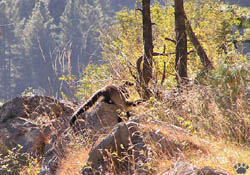
Yellow-throated martens (Martes flavigula), Ayubia. |
Dungagari-
Ayubia trail is the best place to look for wildlife, such as yellow-
throated marten. |

Yellow-throated martens, Ayubia Nat'l Park. |
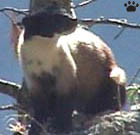 |
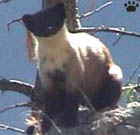 |
 |
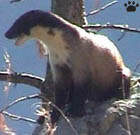 |
| Yellow-throated marten,
Ayubia National Park. |

Jungle owlet,
Machiara. |
Ayubia National Park has more species of forest
birds than any other place in Pakistan (including three species of pheasants).
Machiara National Park further north is also good - look for Western tragopan
(Tragopan melanocephalus) and jungle owlet (Glaucidium radiatum). |

Jungle owlet,
Machiara. |
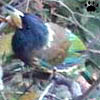 |
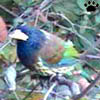 |
 |
 |
 |
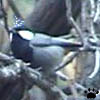 |
| Birds of Ayubia Nat'l
Park, left to right: great barbet (Megalaima virens, 2 photos), fulvous-breasted
woodpecker (Picoides macei), Himalayan woodpecker (P. himalayensis),
black-throated tit (Aegithalos concinnus), rufous-vented tit (Parus
rubidiventris). |
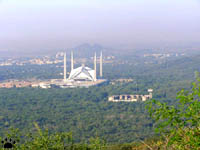
View of Shah Faisal Mosque in Islamabad
from Margalla Hills. |
As for the foothills, the only place in Pakistan
where original hill forest still exists is Margalla Hills Nat'l Park outside Islamabad.
Its jungle has surprising variety of wildlife, even some large animals such as
leopards. |

Rusty-cheeked scimitar-babbler
(Pomatorhinus erythrocnemis), Margalla Hills. |
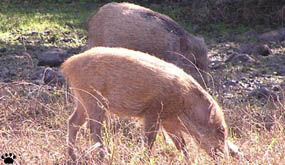 |
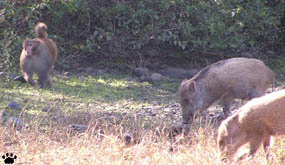 |
| Wild boars (Sus scrofa) and
rhesus macaque (Macaca mulatta), Margalla Hills. |
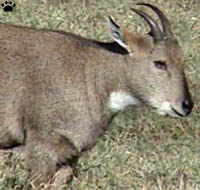
Grey goral (Naemorhedus goral), Margalla Hills. |
The park also has its share of introduced species,
such as Australian budgerigar.
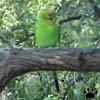
Budgerigar (Melopsittacus
undulatus), Margalla Hills. |

Grey goral (Naemorhedus goral), Margalla Hills. |
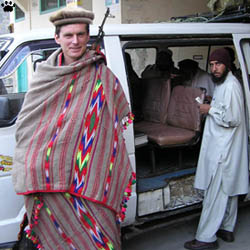
Author traveling in Kafiristan.
Part 4: Lahore
Back to Part 2
Home
|